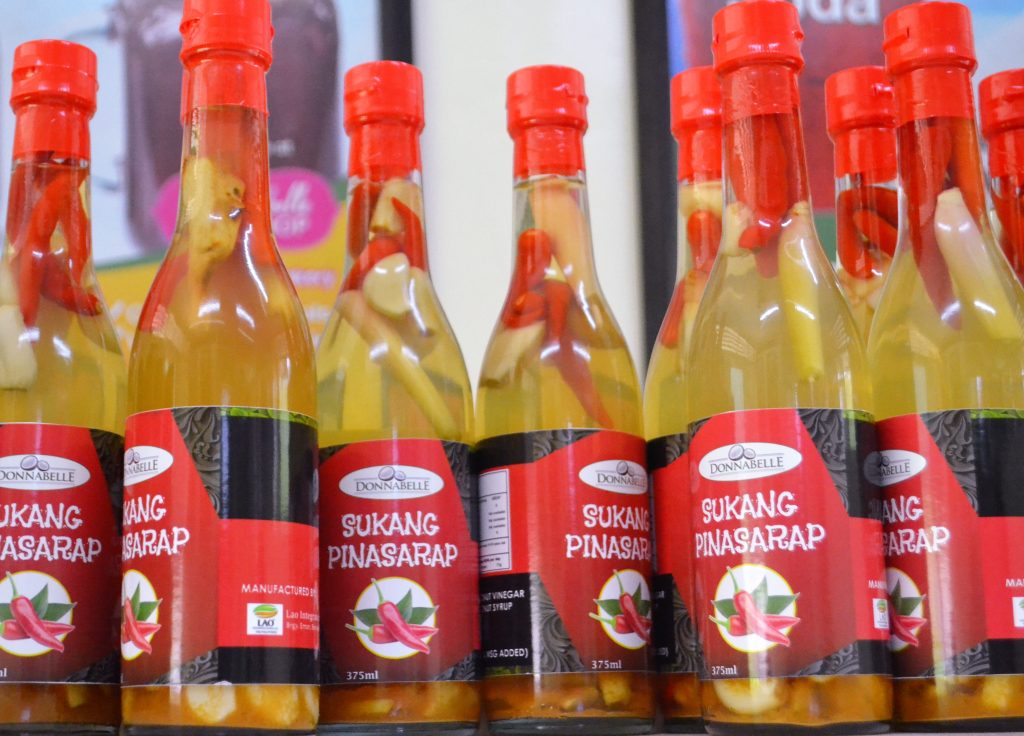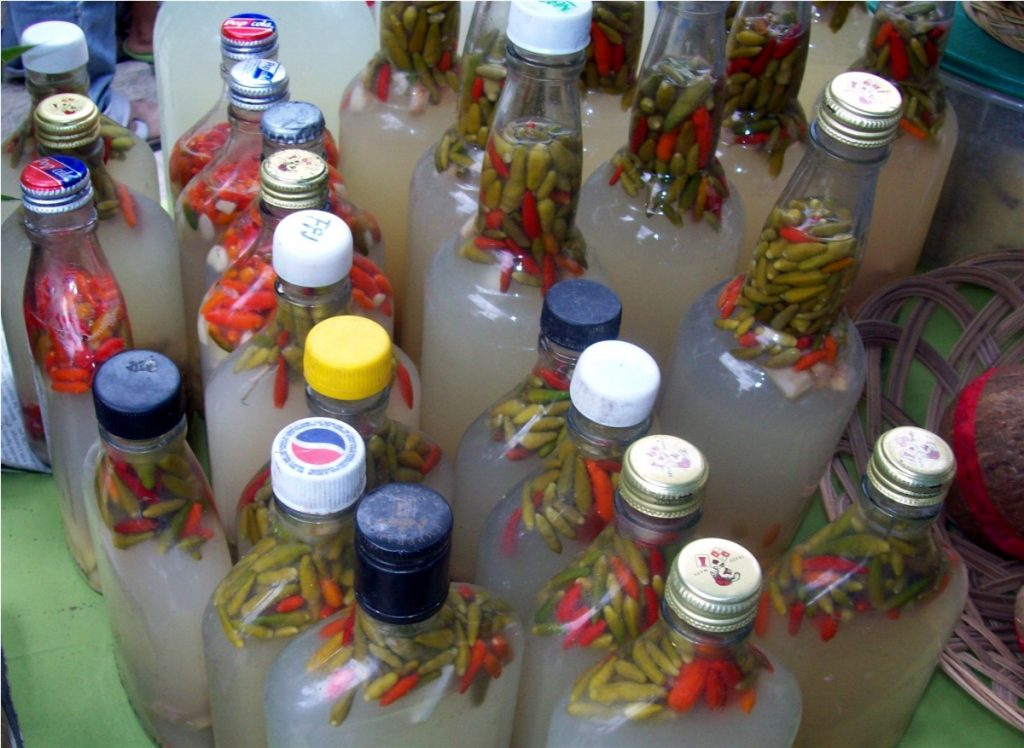Eight out of 10 vinegar products sold in the local markets contain “fake ingredients” and thus could be harmful to consumers, scientists of the Department of Science and Technology (DOST) reported.
Researchers from the Philippine Nuclear Research Institute (PNRI), a DOST line agency, use isotope-based analytical techniques to distinguish vinegar and other condiments from natural or plant-based sources from those which are derived from petroleum-based sources.
“Condiments usually undergo the process of fermentation, and the raw materials must come from fruits and other natural products,” explained Raymond Sucgang, head of the PNRI Nuclear Analytical Techniques Applications Section.

His research team was totally surprised by their findings. “One can only imagine all the impurities and residues from the petroleum by-products which can be the source of various degenerative diseases,” pointed out Sucgang.
As acetic acid comes from fossil fuels and by-product in the production of diesel and oil, it is very dirty. As such, products containing this inorganic type of acid are dangerous to human health.
“Synthetic acetic acid should not be used in food production or as condiment,” Sucgang said, adding that products containing synthetic materials have impurities “and these impurities, according to medical journals, can cause cancer and degenerative diseases like Parkinson’s.”
Vinegar, defined as a liquid fit for human consumption and contains specified amount of acetic acid and water, has long been used around the world as a basic seasoning in the preparation of cooking of certain foods because its sharp taste makes it so useful and versatile.
“Vinegar adds flavor to vegetable and meat products,” M. Plessi wrote in Encyclopedia of Food Sciences and Nutrition. “It is one of the ingredients of salad dressings, sauces, such as tabasco and tomato products, such as ketchups, mustard, and aspics. Mixed with oil and salt, it makes the classic vinaigrette, and it can be used as a condiment for salad and as a sauce for cold, cooked vegetables, meat and fish.”
Vinegar is one of the oldest fermentation products known to man as its history dates back to around 2000 BC, having been considered for a long time as the poor relative among fermented food products. It was used by ancient Egyptians, Greeks and Romans.
“(Vinegar) is produced from raw materials of different agricultural origin containing starch and sugars, that are subjected to a process of double fermentation, alcoholic, and acetous,” says the book, Fermented Foods in Health and Disease Prevention.
Among the raw materials that can be used in producing vinegar are cider, grapes or wine, molasses, sorghum syrup, honey, fruits, maple syrup, sugarcane, palm, potatoes, malt, grain, whey, and coconut wine or tuba.

But it’s not only tuba that can be made into vinegar – even the coconut water. “Coconut water and coconut sap may be processed into vinegar,” pointed out Agriculture Secretary Emmanuel Piñol.
In a feature published by state-run Philippine News Agency (PNA), Lilybeth Ison wrote: “For coconut water alone, the country produces 15 billion matured nuts yearly, with farmers focused only on harvesting the coconut meat and throwing away the other parts of the nuts, including water.”
Assuming that each nut contains one-fourth liter of coconut water, the volume of coconut water wasted is estimated at 3.5 billion liters, Piñol said, adding that coconut vinegar could be “an alternative income generator” for coconut producing communities.
“Vinegar-making is a traditional source of income for many coconut farmers in the country but it has reportedly been ignored and neglected by the government in the past,” Ison wrote.
Vinegar is made through the fermentation of ethanol alcohol. “Bacteria are used to ferment (or break down) the ethanol into by-products including acetic acid,” wrote Bethany Moncel in an article. “This acetic acid is what makes vinegar unique, although it contains other substances including vitamins, minerals and flavor compounds.”
Compendium of Commercially-Viable Coconut Technologies, published by the Department of Science and Technology (DOST), has come up with a simple method on how to convert coconut sap into natural vinegar. Here’s how:
The tuba is collected by tapping (making a small incision) on the tender unopened inflorescence. For easy collection, the inflorescence is slowly bent downward. The collected sap is poured in a wide large container and then covered with a clean net to allow aeration and prevent contamination. The sap is allowed to ferment naturally for 60 days.
Sixty days later, the fermented sap is pasteurized by boiling for 5 to 10 minutes at 60-65 degrees Centigrade to maintain the desired quality of the matured vinegar with at least pH 4. It is allowed to cool before placing it in sterile bottles. The bottles should be covered tightly and sealed.

DOST suggested that the sap vinegar be aged for one year. “The color of the vinegar changes as it ages, from cloudy white to light yellow to a clear light brown as it further matures,” the publication stated.
The publication also reminded to observe strict compliance with the quality control standards during the whole process. “This simple organic process of fermentation and pasteurization make the technology ideal for small- and medium-scale enterprise,” it said.
Vinegar, by the way, is one of the most useful products that can treat various health problems. “Vinegar amazing benefits includes treating allergies, balancing alkali, fighting microbial, treating hypertension, fighting cancer, fighting oral bacteria, promoting hair growth, maintaining skin elasticity, lowering high blood sugar, helps burn fat, helps reduce cholesterol level, relieves acid reflux, and improves gut health,” writes Michael Jessimy, author of “Amazing Health Benefits of Vinegar.”






